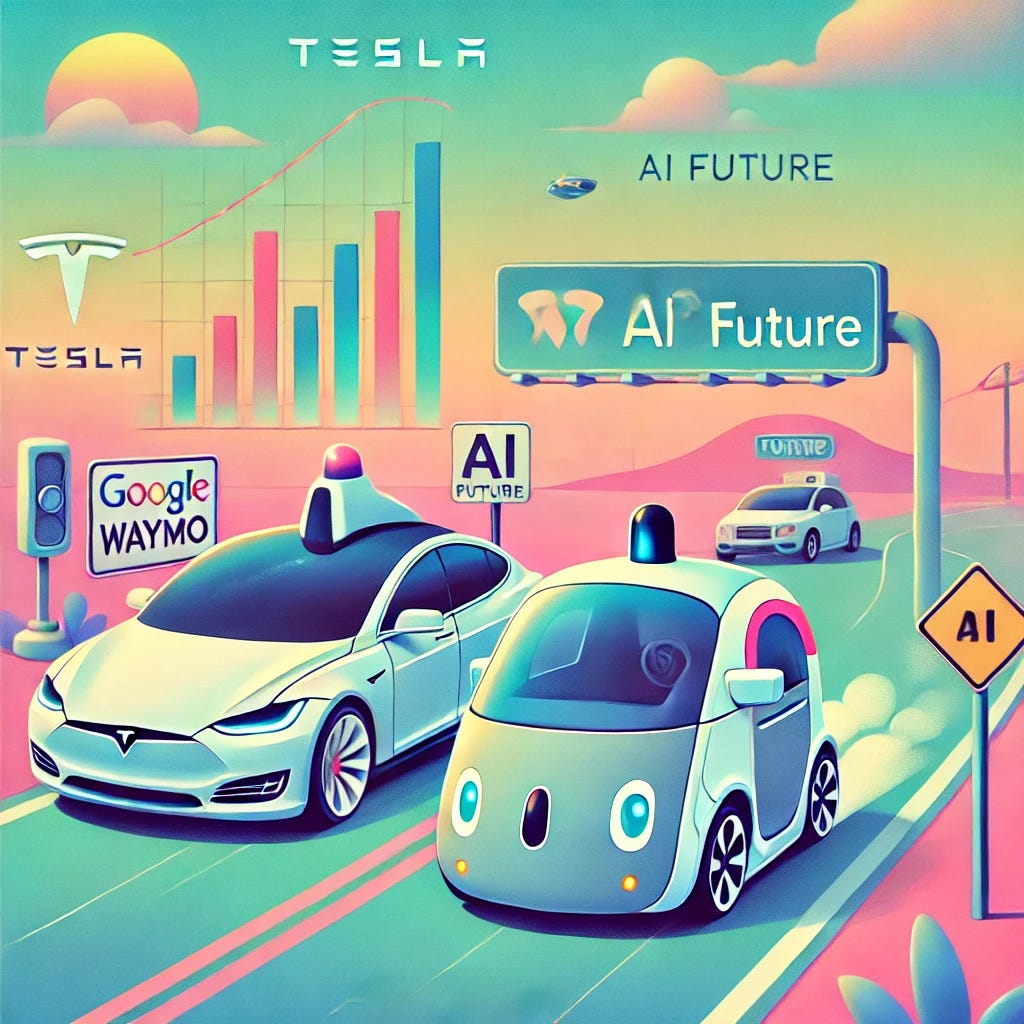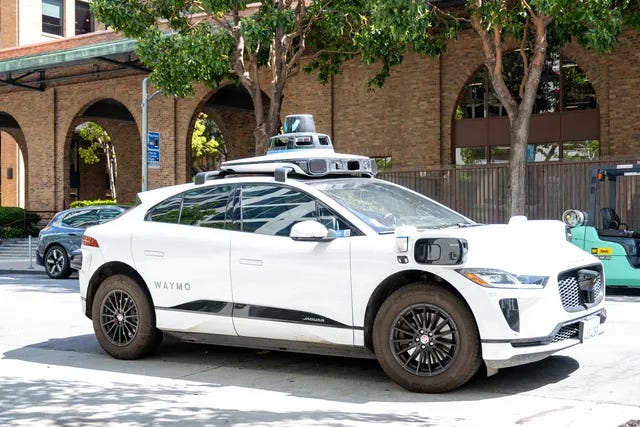Tesla’s Q3 Setback: Can the Robotaxi and AI Shift Revive Its Momentum?
Facing Disappointing Deliveries, Tesla's AI Ambitions Clash with Google’s Waymo in the Race for Autonomous Dominance. India still seems to be out of reach.
Tesla’s Disappointing Q3 Deliveries Ahead of Robotaxi Launch
Tesla, the electric vehicle (EV) giant, has reported a smaller-than-expected rise in its third-quarter deliveries, underscoring the growing challenges it faces in an increasingly competitive EV market. Despite aggressive price cuts and financing incentives, Tesla’s aging lineup of electric vehicles struggled to attract sufficient buyers. This shortfall has raised doubts about the company’s ability to maintain its rapid growth, leading to a sharp drop in its share value, down more than 6%.
Compounding these concerns is CEO Elon Musk, who, while driving Tesla's innovation, has become increasingly involved in U.S. politics, particularly as a vocal and ardent supporter of Donald Trump in the lead-up to the 2024 presidential election. Musk’s political stance has sparked debate over whether his high-profile political engagements could potentially distract from or impact Tesla’s business strategy during this critical period.
Below-Expected Delivery Numbers: A Sign of Slowing Demand?
Tesla delivered 462,890 vehicles between July and September 2024, a modest 6.4% increase compared to the same period last year. However, this figure fell short of the 469,828 vehicles expected by analysts surveyed by LSEG. The lower-than-anticipated sales figures resulted in a significant drop in Tesla’s stock, wiping out much of the gains it had accumulated earlier this year.
Although the company managed to post its first quarterly growth after two consecutive quarters of falling sales, analysts fear that if Tesla continues to underperform, it could face its first-ever annual decline in deliveries after years of exponential growth.
The China Factor: Strong Performance Amid Global Weakness
China, a crucial market that accounts for nearly a third of Tesla’s global sales, played a key role in shoring up the company’s third-quarter performance. Tesla introduced a range of incentives in China, including zero-interest financing and insurance offers, which helped boost sales in the region. According to data from the China Passenger Car Association, Tesla’s sales in China were strong in July and August. However, this performance was not enough to offset sluggish demand in other major markets such as the United States and Europe.
Dan Ives, an analyst at Wedbush Securities, summarised the situation: "We believe China showed relative strength this quarter but was offset by weakness in the US and Europe."
A Record Fourth Quarter Needed to Avoid a Decline in 2024 Sales
Despite CEO Elon Musk’s optimism about increasing deliveries in 2024, the third-quarter results have cast doubt on Tesla’s ability to meet its targets. With Tesla having delivered 1.8 million vehicles in 2023, it would need a record-breaking 516,344 vehicles delivered in the fourth quarter to avoid a decline in annual sales. This target is increasingly viewed as unattainable given the current market conditions.
Sandeep Rao, a senior researcher at Leverage Shares, voiced concerns about Tesla’s strategy, stating, "There's only so much Tesla can do with price cuts and incentives while offering no fresh vehicles for customers." Tesla’s aging lineup is struggling to compete with newer models from rivals, especially in China, which has emerged as a hotbed for electric vehicle innovation.
Price Cuts and Their Impact on Profit Margins
In an effort to boost demand, Tesla has been aggressively cutting prices and offering incentives, particularly in competitive markets such as China. While these tactics have helped shore up sales in the short term, they have begun to erode the company’s profit margins. Investors and analysts are concerned that Tesla’s strategy of relying on price reductions could harm its long-term financial stability, particularly as it faces increased competition from both established carmakers and emerging EV manufacturers.
Some analysts argue that the return to quarterly growth is a positive sign, but the ongoing pressure on profit margins remains a significant issue. The question is whether Tesla can continue to sustain growth without compromising profitability.
Potential Competition from Google’s Driverless Car
Tesla’s upcoming robotaxi, expected to be unveiled on October 10, 2024, is seen as a major step in shifting the company’s focus towards autonomous driving technology. However, Tesla is not the only player in this space. Google, through its Waymo division, is advancing rapidly in the driverless car industry, and its fully autonomous ride-hailing service is already being tested in select cities. With Google’s strength in artificial intelligence and machine learning, its driverless car project presents a formidable challenge to Tesla’s robotaxi ambitions. Tesla will need to ensure that its AI-powered autonomous vehicle can match or outperform Google’s Waymo, as competition in the autonomous driving market intensifies. This could be a crucial factor in determining Tesla's future dominance in the autonomous vehicle sector.
The Role of New Models and the Upcoming Robotaxi
One of Tesla’s key challenges lies in its aging vehicle lineup, which includes the Model 3 and Model Y, both of which are starting to feel outdated compared to new offerings from rivals. In the third quarter, Tesla delivered 439,975 units of the Model 3 and Model Y combined, along with 22,915 units of its other models, including the Model S, Model X, and Cybertruck. However, competition from new models, particularly from Chinese manufacturers, is putting increasing pressure on Tesla to innovate and refresh its offerings.
The company’s upcoming robotaxi product is expected to be a game-changer. The AI-powered autonomous vehicle, set to be unveiled in Los Angeles, could shift Tesla’s focus from traditional EVs to the next generation of autonomous transportation. Investors are watching closely to see if the robotaxi can help reignite interest in Tesla’s vehicles and provide a much-needed boost to the company’s stock and market position.
Tesla's Struggles to Enter the Indian Market
Tesla’s much-anticipated entry into the Indian market has been fraught with challenges, particularly surrounding import duties and local manufacturing requirements. The Indian government imposes hefty import taxes on completely built units (CBUs), doubling the price of imported vehicles and creating a significant pricing barrier for Tesla. While the company has expressed reluctance to establish local manufacturing without first testing the market through imports, India’s stance has been firm. The government, under its "Make in India" initiative, insists that Tesla must manufacture its vehicles locally before any concessions on import taxes can be considered. This impasse reflects the broader challenge Tesla faces in India: balancing its global strategy with the demands of local regulations.
Government and Industry Obstacles
One of the key hurdles for Tesla is the lack of consensus within the Indian government regarding its entry. Commerce Minister Piyush Goyal and Transport Minister Nitin Gadkari have expressed different views, underscoring the lack of a unified policy approach. This is further complicated by India's weak indigenous component manufacturing capacity, particularly for EV batteries, which are primarily imported. Tesla’s reliance on a robust supply chain is at odds with the current state of India’s EV industry, where the absence of domestic battery production increases costs and supply chain vulnerabilities.
Moreover, Elon Musk’s firm stance—that he will not manufacture cars in a country where they are not permitted to be sold—has created a deadlock. Meanwhile, India continues to face broader EV industry challenges, such as insufficient charging infrastructure and limited research and development capabilities. Until these systemic issues are resolved, Tesla’s presence in India remains uncertain, despite the growing domestic EV market, led by companies like Ola Electric and Ather Energy.
Summing Up: Uncertain Future Amidst Rising Competition
Tesla’s third-quarter delivery report underscores the mounting pressures the company faces in maintaining its leadership position in the EV and autonomous vehicle markets. While Tesla continues to post solid figures, it is increasingly being challenged by rising competition from Chinese automakers like BYD and tech giants such as Google, which are advancing rapidly in the autonomous driving space. Additionally, Tesla’s aspirations to expand into new markets, like India, face significant hurdles due to local regulatory requirements and infrastructure limitations, adding another layer of complexity to its global strategy.
As Tesla prepares to unveil its highly anticipated robotaxi, the stakes are higher than ever. The company’s ability to remain competitive in the fast-evolving autonomous vehicle sector, while also addressing challenges like an aging product lineup and shrinking profit margins, will be critical in shaping its future. With market observers closely watching the fourth-quarter performance and the robotaxi launch, Tesla must demonstrate it can regain momentum not only in established markets but also in emerging ones like India, where policy and infrastructure barriers present unique challenges1.




